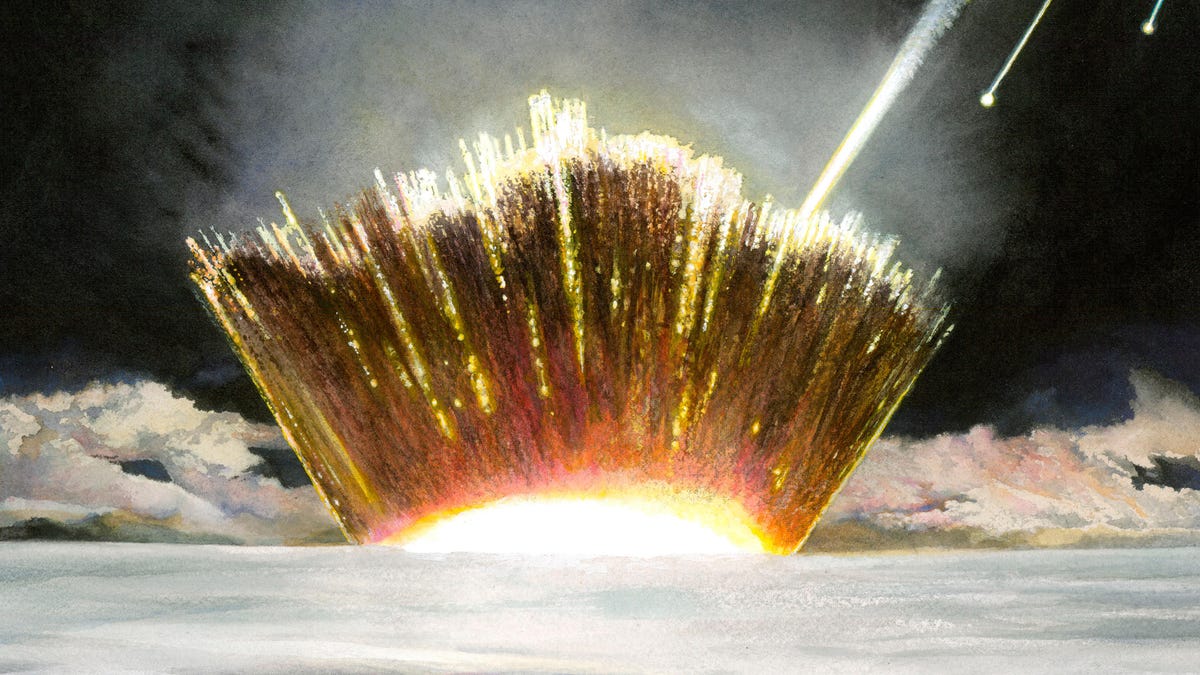NASA says city-smashing asteroids aren't so common
The kind of cosmic collision that would be powerful enough to do major damage might not be coming anytime soon.

An artist's impression of the asteroid slamming into the Greenland ice sheet
Asteroids are all around us, but we shouldn't be losing sleep over the big buggers. A small space rock was spotted just before slamming into the atmosphere last weekend, and over 20,000 near-earth asteroids have been cataloged, but new research from NASA finds impacts that could do serious damage aren't very frequent.
Perhaps the last time an asteroid large enough to inflict serious hurt on a limited part of the Earth's surface (we're not talking about an extinction-level space rock like the one that ended the dinosaurs) came knocking was in 1908.
In June of that year, the so-called Tunguska Event impacted an unpopulated part of Siberia and was witnessed by only a handful of people, but it flattened 500,000 acres of forest, scorched the Earth and knocked people out of their chairs 40 miles away (64 km). It's easy and terrifying to imagine what the result might have been had chance dictated the impact occurred over a major metropolitan area instead.
"Tunguska is the largest cosmic impact witnessed by modern humans," David Morrison, a planetary science researcher at NASA's Ames Research Center in Silicon Valley, said in a release. "It also is characteristic of the sort of impact we are likely to have to protect against in the future."
But when researchers revisited the Tunguska Event with the help of computer models and tooked into account the latest data on the population of asteroids in our neighborhood, they found that such major impacts are exceedingly rare.
The results, published in the journal Icarus, find that such a powerful impact should only be expected roughly every thousand years or longer rather than once every century or so, as was previously thought.
While this is certainly good news for all earthly life forms, the threat of an asteroid impact is still very real and worth preparing for, as the 2013 bolide explosion over Russia reminded us.
"A lot of uncertainty remains about how large asteroids break up in the atmosphere and how much damage they could cause on the ground," said NASA researcher and co-author Lorien Wheeler. "However, recent advancements in computational models, along with analyses of the Chelyabinsk and other meteor events, are helping to improve our understanding of these factors so that we can better evaluate potential asteroid threats in the future."
The technology to warn us of such a threat is light years beyond where it was in 1908, but even if another Tunguska isn't on the other horizon. There's still work to be done.
After all, that 2013 asteroid over Russia was the most powerful in decades, and it came darting at us from behind the sun with no warning at all.

